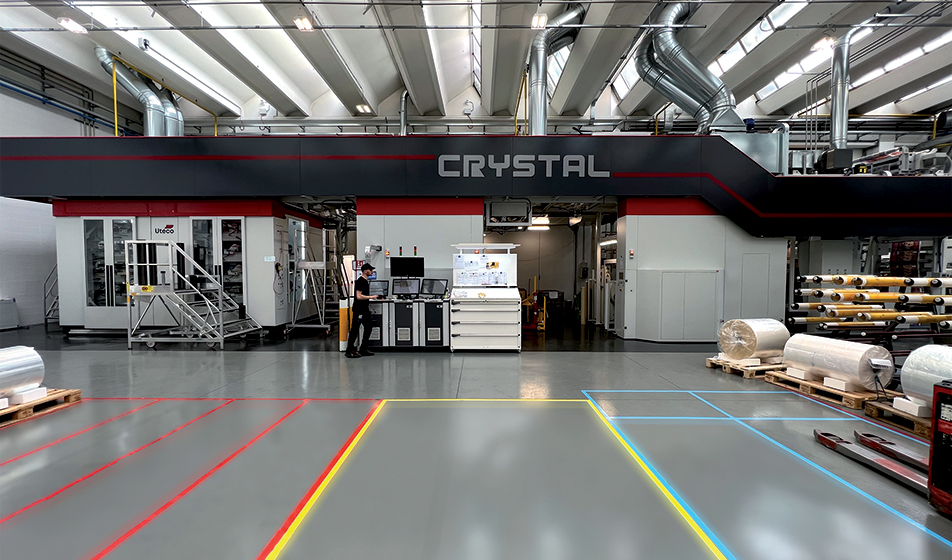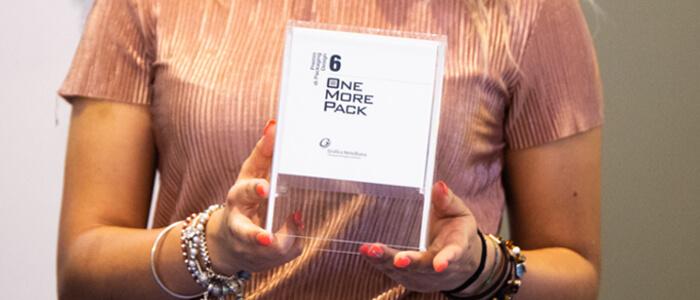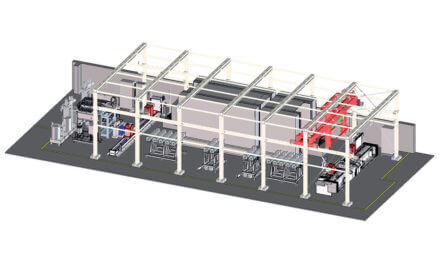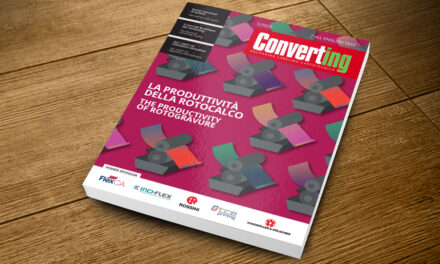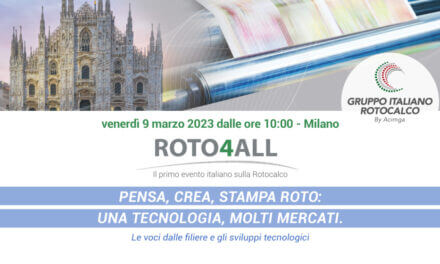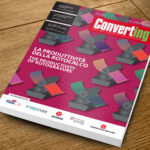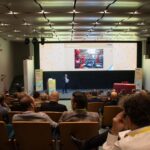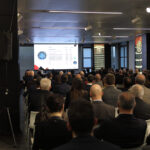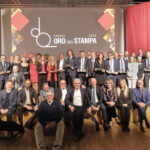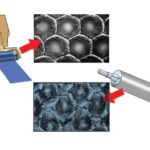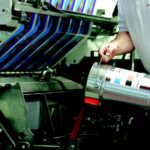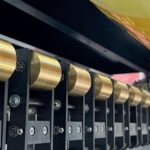The fortunes of SDR in flexible packaging rest on an important and advanced technology park, with its heart set on Uteco’s flexo printing machines. The beautiful story of the partnership with the Venetian builder in the words of Nicolò Ferracin, who reveals the reasons and the new development projects behind it.
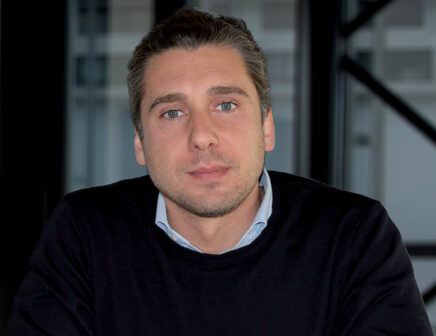 SDR PACK is one of Italy’s great converters, with a presence on the market, a technology and a vision that anticipate and support further developments. Seven years ago, with the entry of the third generation of entrepreneurs in the family business, it embarked on a path of renewal and an ambitious plan for growth on domestic and international markets. Technology plays an important role in it and the collaborative relationship with the machinery supplier enables to realize all ideas, improvement plans, new performance goals of a company that never stops.
SDR PACK is one of Italy’s great converters, with a presence on the market, a technology and a vision that anticipate and support further developments. Seven years ago, with the entry of the third generation of entrepreneurs in the family business, it embarked on a path of renewal and an ambitious plan for growth on domestic and international markets. Technology plays an important role in it and the collaborative relationship with the machinery supplier enables to realize all ideas, improvement plans, new performance goals of a company that never stops.
The story is told here by Nicolò Ferracin who, after an in depth training course in the production departments, is now commercial director at the Venetian company.
Nicolò what does it mean, today, for a young entrepreneur, to be at the lead of the family business?
It means being able to bring to life, in the new technological and market context, the values that guided the basic choices of the previous generations and, at the same time, drive the company’s growth towards new goals.
With what objectives?
At the commercial level the development of exports, today only at the starting phase, and the differentiation of outlets from food to the many other sectors in which we can create value, the cosmopharma to begin with, but not only. This implies strengthening production operations with robust injections of informatics, robotics and more generally automation, and renewing our offer to follow the ever changing and evolving demands of the market.
Are you referring to sustainability demands?
Surely sustainability is one of the essential issues to address in order to remain on the market, especially abroad. SDR PACK manufactures a wide and continuously updated range of plastic film packaging, paper-based and compostable, monolayer and laminated, for fresh and frozen products, baked goods and more. Our strong attention to eco-compatibility is documented in our Sustainability Report and testified by the commitment to formulate, transform and convert new ecological materials, managing their functional and aesthetic criticalities with the fundamental support of our technology suppliers.
How?
Having an internal extrusion department (5 plants for PE, PE, EVOH and compostable biopolymers blown extrusion, Ndr) allows us to experiment with new formulations and design ad hoc solutions for clients, and with the sealing layer calibrated on their packaging machines. In general, having all the technologies – including lamination, printing and finishing – at our disposal is the basis for the development of sustainable alternatives to traditional laminated products employing nylon, polyester, aluminum etc, while obtaining the same performance. We have documented a lot of these alternatives on our website, including case studies on pioneering biodegradable plastic barrier packaging, made in collaboration with an Israeli start-up.
… and printing too?
Absolutely. Printing new materials is very difficult and requires very advanced and flexible machines. Not to mention the exponentially increasing demands from the market for print quality and, consequently, for consistency and uniformity. For this reason, our collaboration with Uteco, which has always provided us our flexographic printing machines, is vital.
Why flexo? And why Uteco?
Flexography allows us to print with efficiency, economy and quality 1000 meters “to infinity” runs, managing up to more than 25 jobs per workshift. As for the choice of the supplier, it arises from the need for customization: we had special technical needs and Uteco was very good at welcoming and realizing them, implementing new developments that have increased our and their know-how. The first machines are from 10 years ago and are still working perfectly, and today we have five, all equipped with 1100 web to be able to manage jobs with maximum freedom, of which four are 10 colors machines (two of these equipped with a roto group for coating with glossy and matt paint) and one 6 colors machine to process easier jobs more efficiently. With this fleet we always have machines dedicated to internal printing, external printing, soft touch paint, etc. With Uteco we have brought to our company the innovations in which they have always been at the forefront, on machine control and color management to boot.
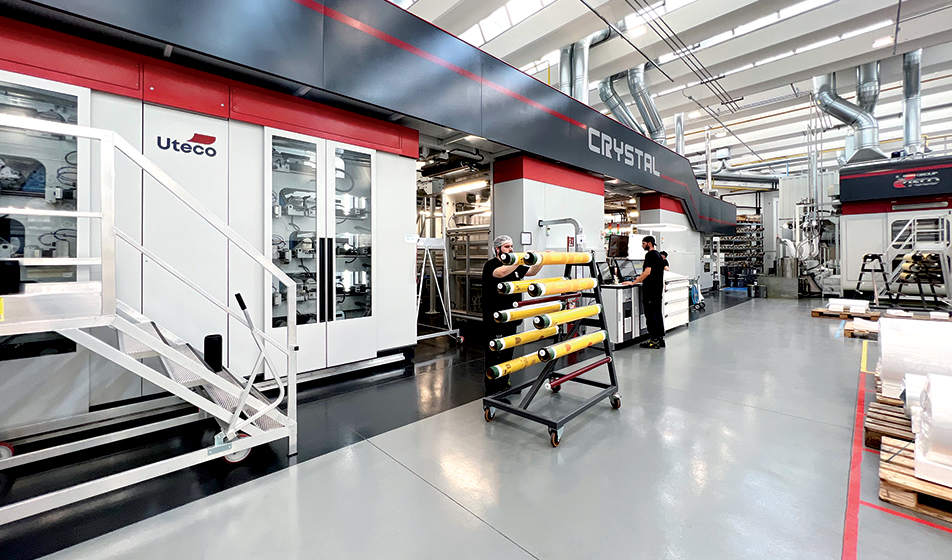
What are the benefits of Uteco’s technology?
Many and at various levels. I’m thinking, just to make a macroscopic example, of the reliability that allows you to manage dozens of job changes a day, getting up to register and then into production in a very short time. With 5 printing machines we are able to handle more than 25 orders in a shift.
Wouldn’t a digital be useful?
When all is said and done, running costs, consumables first and foremost, are still too high.
So we return to the flexibility of flexo, with its organizational and economic advantages…
But also, in the case of Uteco, energy efficiency, and therefore once again sustainability, as well as production speed. In addition, this manufacturer has always worked to improve the working environment, reducing noise pollution with the isolation of moving groups, and redesigning the upper deck, color stations, suction system… In SDR we have obtained all of the ISO quality certifications and Uteco has always met our expectations perfecting machines according to the various objectives. Without neglecting the, often underestimated, aesthetic factor.
Aesthetic factor? You mean the appearance of the machines?
Yes. We spend so much of our lives at the plant, I do not understand those entrepreneurs who live in sumptuous houses and drive beautiful cars but work in ugly and neglected factories. Uteco was the first to work on the appearance of its machines that, in fact, look great in our plant and really enhance it. It changes the lives of the people who work there and communicates the care we put into the work, which in turn becomes care of the product and the customer.
In short, Uteco machines are an added value in terms of reputation as well…
Undoubtedly; in fact, our collaboration has extended beyond technical aspects. For years, for example, they brought their foreign clients to us to show them the operating machines, and it was a satisfaction for us knowing that our beautiful and tidy, clean and well-organized departments were talked about all around the world. Someone even came back with their own people to show them how the work should be done. And when, until not long ago, customers used to come to the plant for start-ups on board the machines, it was a pride to exhibit such beautiful machinery.
Are you planning new investments in machinery?
To best serve large groups that work on long runs, and therefore also ask for the highest quality consistency, we may equip ourselves with a rotogravure machine. We are also pushing towards work automation: recently, the first in Europe to do so, we set up a robotic system for the automatic assembly of clichés and, more generally, we are studying how to reduce off-line set-up times. With an expectation that Uteco can satisfy: automation must also make the machine easier to use, thus allowing the recruitment and training of personnel in a short time. This aspect is certainly important and will give us support for our growth in the coming years.
SDR PACK SpA was born more than forty years ago, during the golden age of plastics, from the intuition of Giorgio Ferracin. It was called Sacchettificio di Rosà and dealt with extrusion and printing in 1-2 colors of PE reels, then transformed into bags. Its evolution into a large flexible packaging converting company begins with the entry of Giorgio’s children – Sandro, Marina and Carlo – in the family business, who add lamination, cutting and packaging to extrusion and printing, giving rise to a wide and differentiated production of packaging for the various food applications. Today the Venetian company is managed by the third generation of entrepreneurs, with Nicolò and Giorgia Ferracin in the top roles and the other cousins teaming up in all other relevant positions; the business has a turnover of about 35 million euros, 120 employees, a 22 thousand square meters production site.

